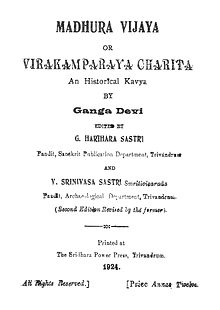After the Nayak’s period, in South India, then
came the Maratha’s rule of Sahaji when Tanjore and its surroundings were
buzzing with activity in many fields of learning, which activity was maintained
by Sahaji’s successors as well. For
nearly a century and a quarter (1675-1800 A.D.) the politically dependent
Tanjore held intellectual hegemony over South India.
Sahaji
was only twelve years old when he ascended the throne in 1684 A.D. and had a
glorious rule of Tanjore for nearly twenty-eight years. He was himself a scholar with a great
achievement through the knowledge of six languages Sanskrit, Hindi, Marathi,
Telugu, Tamil and Kannada.
According
to a grant-deed in Marathi, Sahaji gathered as many as forty-five scholars
drawn from various parts of the country and settled them in Sahajirajapuram (the
present Tiruvisanallur, Tanjore Dist.) Ramabhadra Dikshita was one among them. Being a protégé of Sahaji, Ramabhadra
Dikshita complimented by enlisting the most lovable qualities of his patron
Sahaji that “the Bhoja of the eighteenth century”. He was the author of many literary works
among them, PatanjaliCaritam a Mahakavyam in 8 cantos, a minor-play named
SrngaraTilakaBhana, a play titled JanakiParinayam in 7 Acts, and praise worthy
technical works titled SabdaBhedaNirupanam, UnadiManiDipika and ShadDarsaniSiddhantaSangraham. Ramabhadra Dikshita has carved for himself a
place of honour among the later Sanskrit writers of South India through his
multi-faceted genius.
There
is no branch of human knowledge that has not been dealt with in Sanskrit
Literature. The knowledge and culture of
a highly civilised and intellectually advanced people inhabiting a vast country
from 3000 B.C to about this 21st century A.D., has been recorded in
this language which is rich and well-developed to express any idea in any
branch of learning in clear terms. We
can feel proud of getting birth and living in this most virtuous our own
country which was appreciated by the saints-
“Uttharam yath samudrasya Himadhreschaiva dhakshinam
Varsham thath Bharatham
naama Bharathi yathra Santhathih”




































